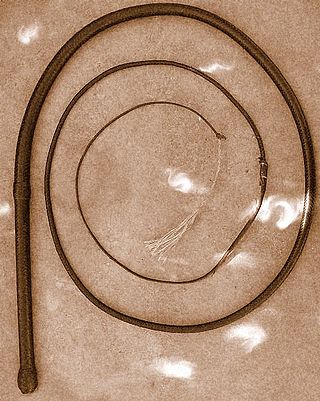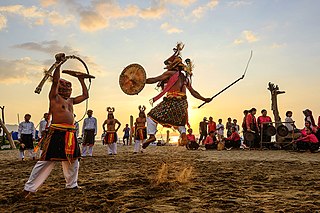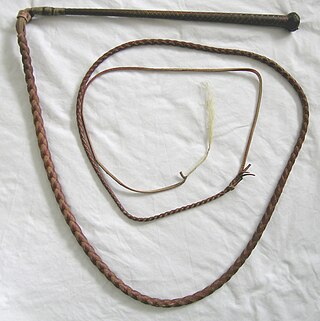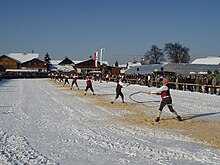
Austrian German, Austrian Standard German (ASG), Standard Austrian German, or Austrian High German, is the variety of Standard German written and spoken in Austria. It has the highest sociolinguistic prestige locally, as it is the variation used in the media and for other formal situations. In less formal situations, Austrians use Bavarian and Alemannic dialects, which are traditionally spoken but rarely written in Austria.

Bavaria, officially the Free State of Bavaria, is a state in the south-east of Germany. With an area of 70,550.19 km2 (27,239.58 sq mi), Bavaria is the largest German state by land area, comprising roughly a fifth of the total land area of Germany. With over 13 million inhabitants, it is second in population only to North Rhine-Westphalia, but due to its large size its population density is below the German average. Bavaria's main cities are Munich, Nuremberg, and Augsburg.

A mousse is a soft prepared food that incorporates air bubbles to give it a light and airy texture. Depending on preparation techniques, it can range from light and fluffy to creamy and thick. A mousse may be sweet or savory.

Salzburg is a state (Land) of the modern Republic of Austria. It is officially named Land Salzburg to distinguish it from its eponymous capital — the city of Salzburg. For centuries, it was an independent Prince-Bishopric of the Holy Roman Empire.

Austrians are the citizens and nationals of Austria. The English term Austrians was applied to the population of Habsburg Austria from the 17th or 18th century. Subsequently, during the 19th century, it referred to the citizens of the Empire of Austria (1804–1867), and from 1867 until 1918 to the citizens of Cisleithania. In the closest sense, the term Austria originally referred to the historical March of Austria, corresponding roughly to the Vienna Basin in what is today Lower Austria.

A whip is a tool or weapon designed to strike humans or other animals to exert control through pain compliance or fear of pain. They can also be used without inflicting pain, for audiovisual cues, such as in equestrianism. They are generally either a firm stick designed for direct contact, or a flexible line requiring a specialized swing. The former is easier and more precise, the latter offers longer reach and greater force. A hunting whip combines a firm stick with a flexible line.

Austrian cuisine is a style of cuisine native to Austria and composed of influences from Central Europe and throughout the former Austro-Hungarian Empire. Austrian cuisine is most often associated with Viennese cuisine, but there are significant regional variations.

A bullwhip is a single-tailed whip, usually made of braided leather or nylon, designed as a tool for working with livestock or competition.
Austrian culture has been influenced by its past and present neighbours: Germany, Hungary, Slovenia, Italy, and Bohemia.

The Bezirk Salzburg-Umgebung is an administrative district (Bezirk) in the federal state of Salzburg, Austria, and congruent with the Flachgau region, except for the Statutarstadt of Salzburg, which forms a district of its own.
John Brady is an Australian whip cracking expert. He has performed in leading shows, fairs and special events, as well as in many television shows and films, including being a stuntman in the Clint Eastwood film Paint Your Wagon.
The Man from Snowy River: Arena Spectacular, based on Banjo Paterson's poem The Man from Snowy River, was a popular musical theatre production which toured Australian capital cities twice during 2002. Kevin Jacobsen and David Atkins were the executive producers for the show. David Atkins and Ignatius Jones were co-directors and co-writers. Extra dialogue was written for the show by Jonathan Biggins and Phillip Scott.

The languages of Austria include German, the official language and lingua franca; Austro-Bavarian, the main dialect outside Vorarlberg; Alemannic, the main dialect in Vorarlberg; and several minority languages.

Whipcracking is the act of producing a cracking sound through the use of a whip. Used during livestock driving and horse riding, it has also become an art. A rhythmic whipcracking belongs to the traditional culture among various Germanic peoples of Bavaria (Goaßlschnalzen), various Alpine areas (Aperschnalzen), Austria, and Hungary (Ostorozás). Today it is a performing art, a part of rodeo show in United States, a competitive sport in Australia and increasingly popular in the United Kingdom, where it crosses boundaries of sport, hobby and performance.

Whip fighting can be done as a ritual, a show, or a sport, the latter also known as whip boxing.

A stockwhip is a type of whip made of a long, tapered length of flexible, plaited leather or nylon with a stiff handle and thong able to pivot along the handle easily. Stock whips are used when mustering cattle.
The Alpenkorps was a provisional mountain formation of division size formed by the Imperial German Army during World War I. It was considered by the Allies to be one of the best in the German Army.
Fiona Smith is an Australian whip maker and competitive whipcracker. She is best known as the 12-time Australian ladies whipcracking champion, but has also won more than thirty other titles in local and national competition. Internationally, she won all three disciplines in an open competition organised by the Wild West Arts Club and held in Las Vegas, Nevada. She did so each time she entered.

A number of Midwinter or Christmas traditions in European folklore involve gift-bringers. Mostly involving the figure of a bearded old man, the traditions have mutually influenced one another, and have adopted aspects from Christian hagiography, even before the modern period. In Eastern Slavic countries, the figure is Father Frost. In Scandinavia, it is an elf-like figure or tomten who comes at Yule. In German-speaking Europe and Latin Europe, it became associated with the Christian Saint Nicholas. In some parts of Central Europe, there is a separate tradition of a young child or fairy-like being bringing presents, known as Christkind. Early modern England had Father Christmas, a character initially associated with feasting and good cheer, though he was not originally a gift bringer.

Chalandamarz is a traditional spring festival in Romansh-speaking and Italian-speaking parts of the Swiss canton of Graubünden. It is celebrated on, and named for, the First of March and marks the end of winter.


















